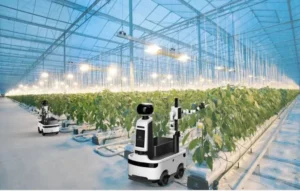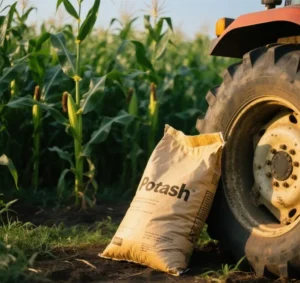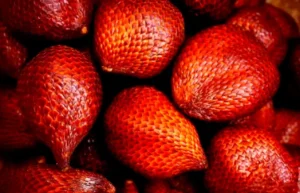In agriculture, the choice between organic manure and chemical fertilizers is a longstanding debate. As the emphasis on sustainable farming practices increases, it becomes crucial to understand the nutrient equivalence between these two types of fertilizers. This article explores how much chemical fertilizer can be replaced by one ton of organic manure and highlights the associated benefits and considerations.
The use of animal manure as fertilizer dates back to the early days of civilization. Rich in organic matter and essential plant nutrients, organic manures offer a natural way to enhance crop productivity and maintain soil fertility. In light of policies like China’s “Zero Growth in Chemical Fertilizer Use” initiative, which aims to reduce reliance on chemical fertilizers by 2020, properly utilizing organic manure has become paramount. For example, some Chinese farmers have reported increased crop yields of up to 15% after switching to organic fertilizers. However, many farmers lack an accurate understanding of the nutrient equivalency between organic and chemical fertilizers. This can lead to under-application or over-application, both of which can have adverse effects such as soil degradation and reduced crop quality.
To provide clarity, let’s examine the nutrient equivalence of various types of organic manure. According to recent agricultural research (Smith et al., 2023), animal-based manures contain significant amounts of nitrogen (N), phosphorus (P), and potassium (K), which can be converted into chemical fertilizer equivalents. For instance, one ton of poultry manure is equivalent to 55-82 kg of ammonium sulfate (N source), 88-96 kg of superphosphate (P source), and 12-17 kg of potassium sulfate (K source). Similarly, processed organic fertilizers, such as pigpen compost, provide 23 kg of ammonium sulfate, 12 kg of superphosphate, and 12 kg of potassium sulfate. Plant-based organic fertilizers, such as soybean cake, offer even higher nutrient densities. One ton of soybean cake can replace up to 350 kg of ammonium sulfate, 83 kg of superphosphate, and 43 kg of potassium sulfate. These figures highlight the potential of organic manures to offset the use of chemical fertilizers.
chemical fertilizer equivalents for common animal manures (per ton):
| Manure Type | Ammonium Sulfate (kg) | Superphosphate (kg) | Potassium Sulfate (kg) |
| Human excreta | 25-40 | 13-25 | 4-6 |
| Pig manure | 17 | 21 | 10 |
| Cattle manure | 16 | 16 | 3 |
| Horse manure | 28 | 19 | 5 |
| Sheep manure | 33 | 31 | 5 |
| Poultry manure | 55-82 | 88-96 | 12-17 |
| Rabbit manure | 86 | 184 | 20 |
| Fertilizer Type | Ammonium Sulfate (kg) | Superphosphate (kg) | Potassium Sulfate (kg) |
| Pigpen compost | 23 | 12 | 12 |
| Cattlepen compost | 17 | 10 | 8 |
| Regular compost | 20-25 | 11-16 | 9-14 |
| Aged wall soil | 9.5 | 28 | 16 |
| Plant ash | – | 219 | 150 |
Furthermore, it is essential to understand the nutrient composition of common manures for precise application. For example, pig manure contains 15% organic matter, 0.5% nitrogen, 0.5%-0.6% phosphorus, and 0.35%-0.45% potassium. In contrast, poultry manure has significantly higher nutrient concentrations: It contains 25.5% organic matter, 1.63% nitrogen, 1.54% phosphorus, and 0.85% potassium. Poultry manure has almost double the organic matter and three times the nitrogen of pig manure, making it a more concentrated fertilizer. In contrast, cattle manure is lower in nutrients, containing 14.5% organic matter, 0.3-0.45% nitrogen, 0.15-0.25% phosphorus, and 0.1-0.15% potassium. These differences necessitate tailored application rates to meet crop demands. For instance, poultry manure can be applied at a lower rate and still provide sufficient nutrients due to its high concentration. Cattle manure, however, may need to be applied more liberally to achieve the same effect. Understanding these differences can help farmers optimize their use of manure, reducing costs while maintaining soil fertility.
The advantages of organic manure extend beyond replacing nutrients. Studies have shown that regularly applying organic manure can improve soil structure by up to 30%, enhancing water retention and aeration (Johnson & Lee, 2022). For instance, a five-year field trial in California revealed that soils treated with poultry manure increased their water-holding capacity by 25% and reduced erosion rates by 40%, compared to treatments using only chemical fertilizers. Additionally, organic manures promote microbial diversity. Research indicates that beneficial soil bacteria populations increase by 50% following organic fertilization (Kim et al., 2024). This biological activity boosts the efficiency of nutrient cycling and promotes long-term soil health.
However, using organic manure comes with potential risks. For instance, immature or improperly composted manure can lead to salinity and phytotoxicity. For instance, fresh poultry manure may contain over 3% salts, which can cause osmotic stress and root damage in sensitive crops (WHO, 2021). Farmers can use soil testing kits to identify such risks by measuring salt levels in the manure and soil. Furthermore, pathogen transmission is a significant concern because untreated manure can harbor up to 7,000 weed seeds and harmful bacteria, such as E. coli and Salmonella (FAO, 2022). Proper composting methods are crucial to mitigate these risks. Thermal composting involves maintaining a temperature of 55-65°C for at least three days, which effectively kills 99% of pathogens and reduces weed seed viability by 90% (USDA, 2023). Farmers can monitor the temperature with a thermometer and turn the compost regularly to ensure uniform heating. In-situ composting techniques, such as solarization combined with biological accelerators like EM (effective microorganisms), can further accelerate decomposition and reduce odor emissions by 30%-50%. By following these simple steps and using available tools, farmers can safely incorporate organic manures into their farming practices.
In conclusion, the nutrient equivalency data presented in Table 1 can help farmers make informed decisions about organic fertilizer application rates. For instance, replacing one ton of chemical fertilizer with poultry manure saves an estimated $150-$200 in input costs while reducing environmental impact (International Fertilizer Association, 2025). While organic manures offer numerous agronomic benefits, proper composting is crucial to mitigate potential risks. By adopting appropriate organic fertilization practices, farmers can reduce their dependence on synthetic fertilizers, improve soil health and resilience, and enhance nutrient use efficiency by up to 20%. This will help them minimize environmental pollution. Future research should focus on precision organic fertilization techniques that optimize nutrient release patterns to match crop demand throughout the growing season.
The shift toward using organic manure as an alternative to chemical fertilizers is a significant step toward sustainable agriculture. As we continue to explore and understand the nuances of organic fertilization, we can ensure healthier, more productive agricultural systems in the future.









